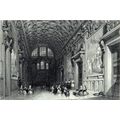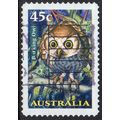Cromarty, Highland - Hugh Miller's Cottage - RP postcard c.1950s
- Condition : Used
- Dispatch : 2 Days
- Brand : None
- ID# : 215305988
- Quantity : 1 item
- Views : 81
- Location : United Kingdom

- Seller : justthebook (+1703)
- Barcode : None
- Start : Wed 18 Jan 2023 11:32:24 (BST)
- Close : Run Until Sold
- Remain : Run Until Sold
More Listings from This Seller view all
Seller's Description
- Postcard
- Picture / Image: Hugh Miller's Cottage, Cromarty [Ross & Cromarty, Highland region] - real photo
- Publisher: Valentines (D 6730)
- Postally used: no
- Stamp: n/a
- Postmark(s): n/a
- Sent to: n/a
- Notes / condition: very light and hardly noticeable crinkle
Please ask if you need any other information and I will do the best I can to answer.
Image may be low res for illustrative purposes - if you need a higher definition image then please contact me and I may be able to send one. No cards have been trimmed (unless stated).
------------------------------------------------
Postage & Packing:
Postage and packing charge should be showing for your location (contact if not sure).
No additional charges for more than one postcard. You can buy as many postcards from me as you like and you will just pay the fee above once. Please wait for combined invoice. (If buying postcards with other things such as books, please contact or wait for invoice before paying).
Payment Methods:
UK - PayPal, Cheque (from UK bank) or postal order
Outside UK: PayPal ONLY (unless otherwise stated) please. NO non-UK currency checks or money orders (sorry).
NOTE: All postcards are sent in brand new stiffened envelopes which I have bought for the task. These are specially made to protect postcards and you may be able to re-use them. In addition there are other costs to sending so the above charge is not just for the stamp!
I will give a full refund if you are not fully satisfied with the postcard.
----------------------------------------------
Text from the free encyclopedia WIKIPEDIA may appear below to give a little background information (internal links may not work) :
*************
Hugh Miller (10 October 1802 – 23/24 December 1856) was a self-taught Scottish geologist and writer, folklorist[1] and an evangelical Christian.[2]
Miller was born in Cromarty, the first of three children of Harriet Wright (bap. 1780, d. 1863) and Hugh Miller (bap. 1754, d. 1807), a shipmaster in the coasting trade. Both parents were from trading and artisan families in Cromarty.[3] His father died in a shipwreck in 1807, and he was brought up by his mother and uncles.[4] He was educated in a parish school where he reportedly showed a love of reading. At 17 he was apprenticed to a stonemason, and his work in quarries, together with walks along the local shoreline, led him to the study of geology. In 1829 he published a volume of poems, and soon afterwards became involved in political and religious controversies, first connected to the Reform Bill, and then with the division in the Church of Scotland which led to the Disruption of 1843.[5]
In 1834 he became accountant in one of the local banks, and in the next year brought out his Scenes and Legends in the North of Scotland. In 1837 he married the children's author Lydia Mackenzie Falconer Fraser.[6] In 1840 the popular party in the Church, with which he had been associated, started a newspaper, the Witness, and Miller was called to be editor in Edinburgh, a position which he retained till the end of his life. He was an influential writer and speaker in the early Free Church.[7] From 1846 he was joined at "The Witness" by Rev James Aitken Wylie.[8]
Cromarty ( /ˈkrɒmərti/ (About this soundlisten); Scottish Gaelic: Cromba, IPA: [ˈkʰɾɔumpə]) is a town, civil parish and former royal burgh in Ross and Cromarty, in the Highland area of Scotland. Situated at the tip of the Black Isle on the southern shore of the mouth of Cromarty Firth, it is 5 miles (8 km) seaward from Invergordon on the opposite coast. In the 2001 census, it had a population of 719.[1]
The name Cromarty variously derives from the Gaelic crom (crooked), and from bati (bay), or from àrd (height), meaning either the "crooked bay", or the "bend between the heights" (referring to the high rocks, or Sutors, which guard the entrance to the Firth), and gave the title to the Earldom of Cromartie. In 1264, its name was Crumbathyn.[2]
Cromarty is a sea port, and its economy was closely linked to the sea for most of its history. Fishing was the major industry, with salmon stations around the surrounding coast, and boats going out to catch herring. Other trade was also by boat: Cromarty's connections to surrounding towns were largely by ferry, while Cromarty boats exported locally-grown hemp fibre, and brought goods such as coal. The Cromarty Firth is an outstanding natural harbour, and was an important British naval base during the First World War and the Second World War. HMS Natal blew up close by on 30 December 1915 with a substantial loss of life. [a] Cromarty gives its name to one of the sea areas of the British Shipping Forecast.
Cromarty Castle was the seat of the Urquharts, who were the hereditary sheriffs of Cromarty. The town was a royal burgh, and the ferry to Nigg was on the royal pilgrimage route north to Tain. Until 1890, it was the county town of the former county of Cromartyshire.
The site of the town's mediaeval burgh dating to at least the 12th century was identified by local archaeologists after winter storms in 2012 eroded sections of the shoreline. A community archaeology project, which began in 2013, is investigated the remains of roads and buildings at the site on the eastern edge of the present town.[3]
Cromarty was the birthplace of Sir Thomas Urquhart, the polymath Royalist most famous as the first translator of Rabelais into English.
In the nineteenth century, Cromarty was the birthplace and home of Hugh Miller, a geologist, writer, journalist and participant in the Disruptions in the Church of Scotland. Among his works was a collection of local folklore, such as the legend, dating from around 1740, that a Cromarty man named John Reid was granted three wishes from a mermaid, and that he used one of the wishes to marry a woman named Helen Stuart.[4]
Listing Information
| Listing Type | Gallery Listing |
| Listing ID# | 215305988 |
| Start Time | Wed 18 Jan 2023 11:32:24 (BST) |
| Close Time | Run Until Sold |
| Starting Bid | Fixed Price (no bidding) |
| Item Condition | Used |
| Bids | 0 |
| Views | 81 |
| Dispatch Time | 2 Days |
| Quantity | 1 |
| Location | United Kingdom |
| Auto Extend | No |




 for 1 item(s)
for 1 item(s)
















